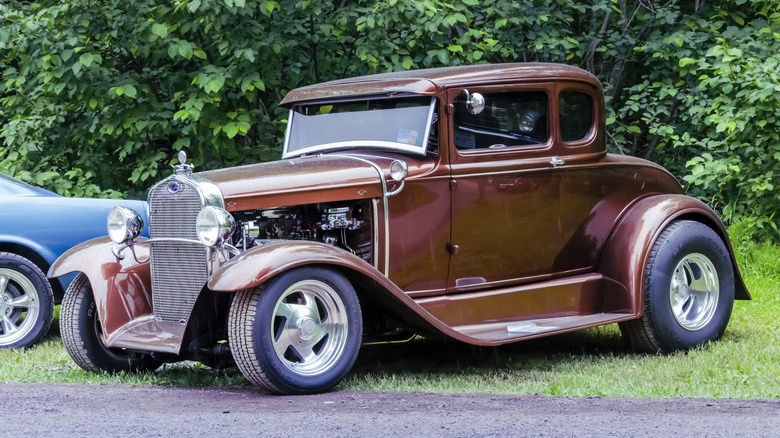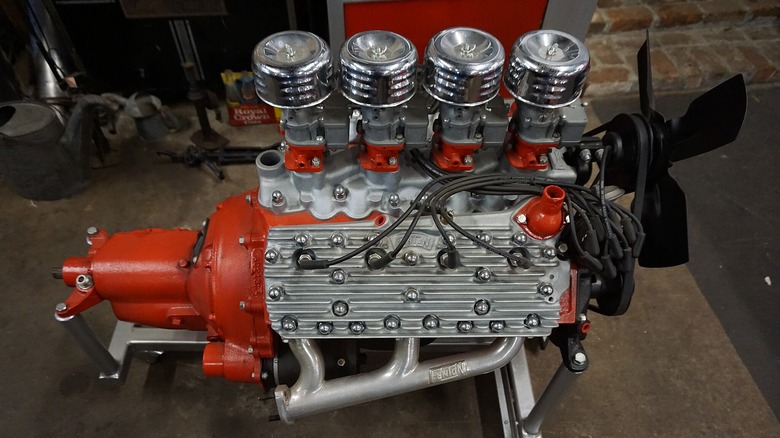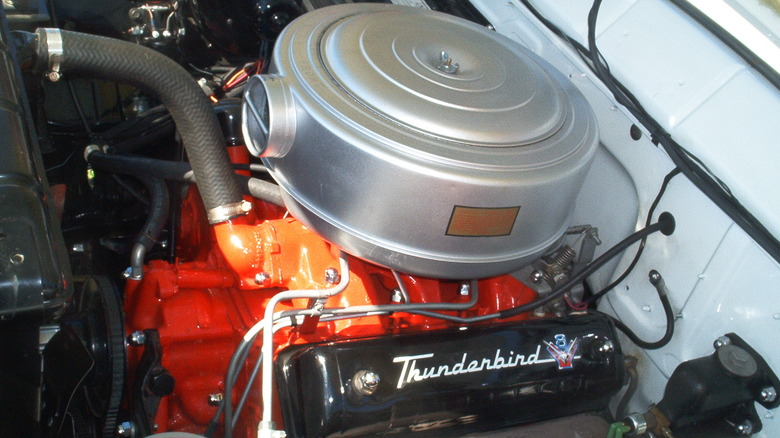Why Ford Discontinued The Flathead V8 Engine
It was considered a major breakthrough when Ford launched its Flathead V8 engine in 1932. Up until that point, V8 engines were expensive and limited to just luxury cars, but Henry Ford wanted one that everyday people could afford, so he created a 221 ci, or 3.6-liter V8 that produced 65 horsepower, beating its six-cylinder rivals, and sold it for as little as $460. Its success came from a new and innovative monoblock design, which cast the block and crankcase as a single unit, making mass production possible at a lower cost.
The company forked out the equivalent of more than $1 billion in today's money delivering it to the market, and buyers were immediately hooked, with 300,000 units eventually being produced per day. The Flathead V8 wasn't exactly trouble-free, though.
Poor engineering caused overheating, and design quirks like its original cooling system required constant factory updates and aftermarket solutions. Many of the issues would generally be worked out, but the mechanical stress and overheating problem continued throughout its life. That being said, it still became a big hit and a cultural icon for hot-rodders.
Engineering limits that could not be solved
Despite the success of the Ford Flathead V8, it had embedded flaws from the very beginning, stemming from the way it was built. Its valves were positioned inside the block, creating lifelong issues that no amount of tweaking could permanently fix.
Exhaust gases had to travel through passages inside the water jacket, exposing the block to extreme heat. This put a constant burden on the cooling system that often caused vapor lock or cracked blocks. Airflow was another nagging problem.
Both intake and exhaust had to make sharp turns, reducing efficiency and preventing the engine from producing high power at higher rpm. On top of that, the shape of the combustion chamber restricted compression ratios to about 6.2:1.
In a time period when high-octane fuel allowed competitors to raise compression and chase more horsepower, the Flathead was simply stuck. These built-in flaws pointed directly to the engineering design that made the engine famous, while also guaranteeing its eventual end.
Competition and Ford's move to the Y-block
By the time the 1950s arrived, buyers wanted more power, and other carmakers gave them what they asked for. Chrysler's 1951 FirePower HEMI V8 used hemispherical combustion chambers and overhead valves to generate 235 horsepower by 1954, which was more than double the Flathead's highest ever output of 110 horsepower.
Chevrolet joined the push for more power with its small block V8 in 1955, a compact and affordable design that rose quickly among hot rod enthusiasts due to its performance potential. The Flathead was once the go-to engine for many custom builders, but fell out of favor because nothing could be done erase its fundamental headaches.
Ford, understanding this, decided to move on to introducing its Y-block V8 in 1954, featuring overhead valves, cylinders surrounded by water for better cooling, and a decent bump in power up to 130 horsepower. Although the Y-block had its own set of issues, it was a clear break from the Flathead's outdated design, leading to it eventually being discontinued in passenger cars in 1953. Even still, the Flathead V8 was a success and left its mark in American automotive history.


